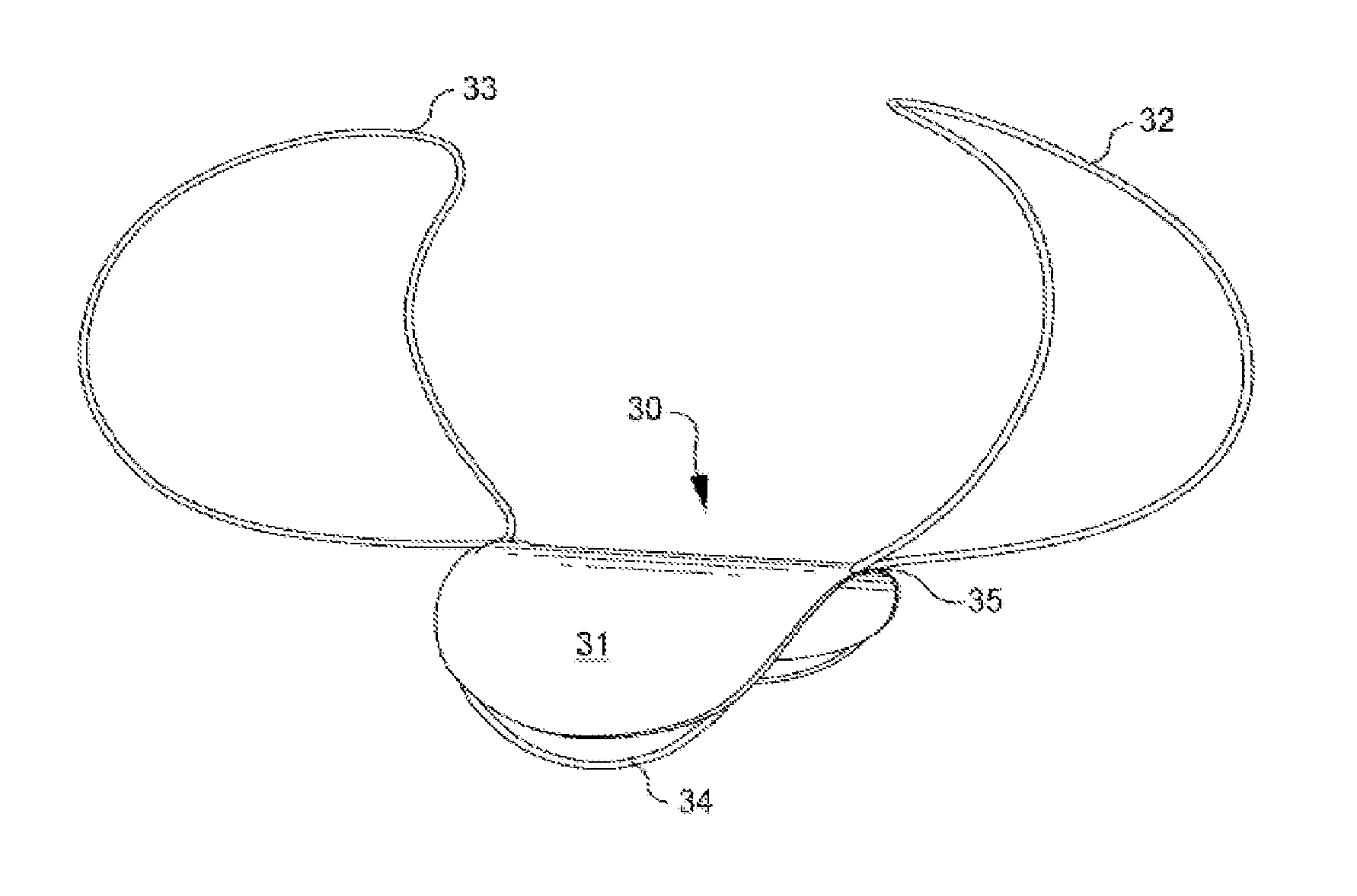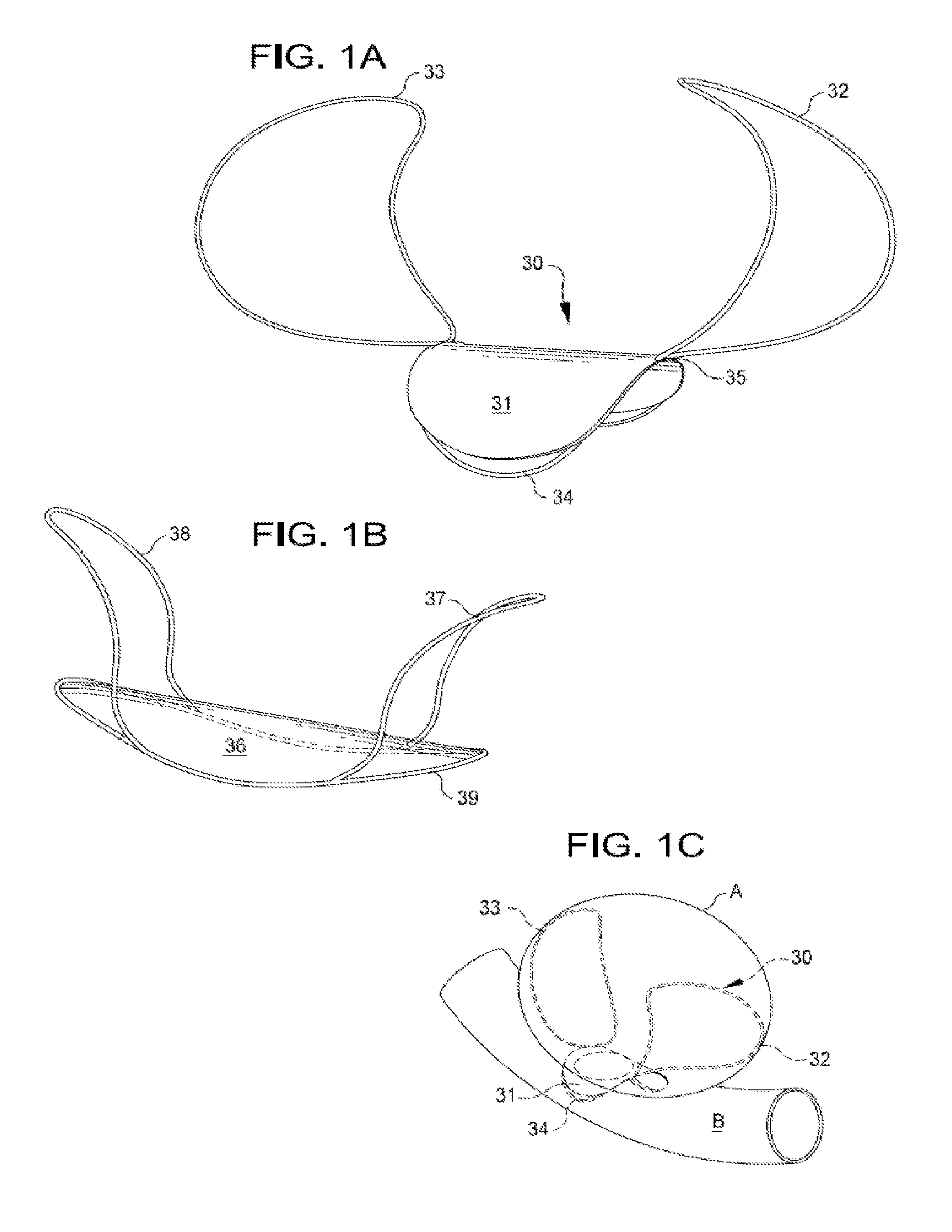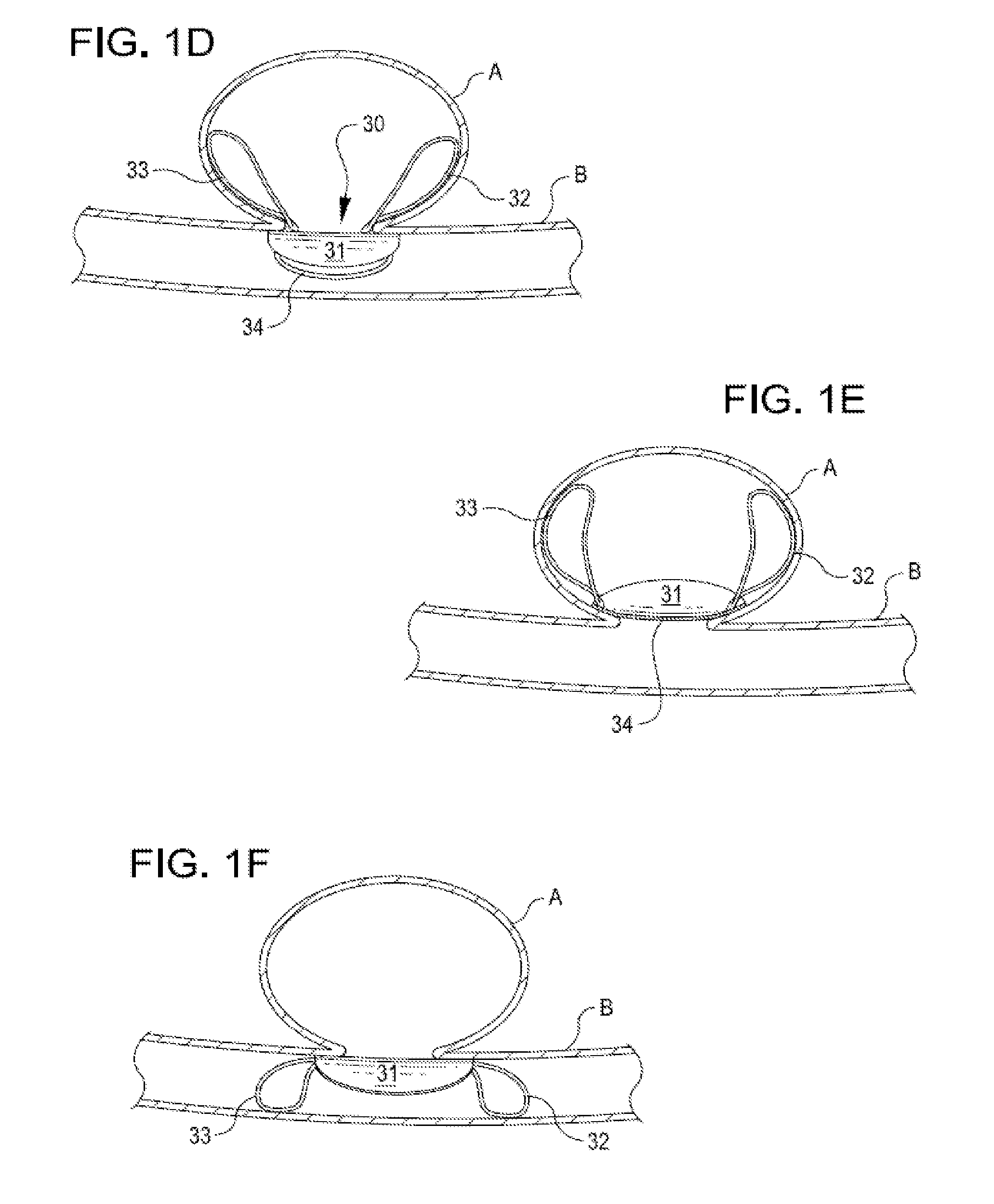Methods and systems for endovascularly clipping and repairing lumen and tissue defects
a technology of lumen and tissue defect, which is applied in the field of methods and systems for clipping and repairing lumen and tissue defects, can solve the problems of high risk of anesthesia, bleeding and infection during and following these types of procedures, and high risks of surgical techniques for closing openings and repairing defects in anatomical lumens and tissues, etc., and achieves reliable attachment
- Summary
- Abstract
- Description
- Claims
- Application Information
AI Technical Summary
Benefits of technology
Problems solved by technology
Method used
Image
Examples
Embodiment Construction
[0054]Implantable systems of the present invention are described and illustrated, in detail, with respect to their application as aneurysm closure devices. It will be appreciated, however, that these systems are not limited to this application and may be adapted and utilized in connection with the treatment and repair of other vessel, tissue or air passageway cavities, abnormalities, or the like. Similarly, it will be appreciated that applicants' methods for repairing defects and openings are not limited to the systems described herein.
[0055]Implantable closure devices of the present invention generally comprise a closure structure that is placed across a tissue or vessel defect and an anchoring structure that positions and holds the closure structure in place. Many alternative embodiments and structures are disclosed herein. The flexible patch(es) or membrane(s) employed in the closure structures disclosed herein are generally constructed from a flexible material that can be delive...
PUM
 Login to View More
Login to View More Abstract
Description
Claims
Application Information
 Login to View More
Login to View More - R&D
- Intellectual Property
- Life Sciences
- Materials
- Tech Scout
- Unparalleled Data Quality
- Higher Quality Content
- 60% Fewer Hallucinations
Browse by: Latest US Patents, China's latest patents, Technical Efficacy Thesaurus, Application Domain, Technology Topic, Popular Technical Reports.
© 2025 PatSnap. All rights reserved.Legal|Privacy policy|Modern Slavery Act Transparency Statement|Sitemap|About US| Contact US: help@patsnap.com



